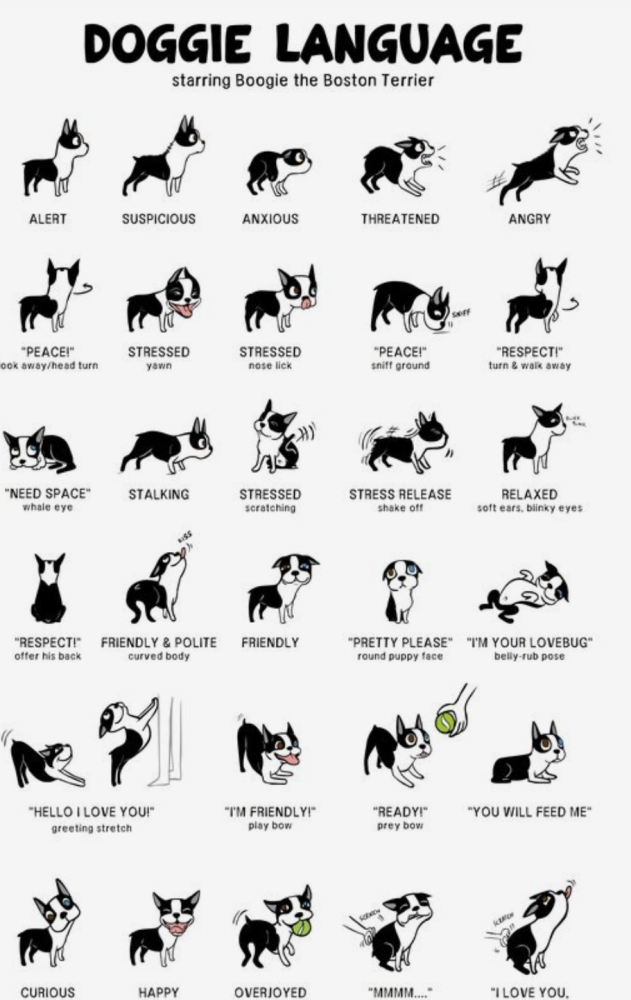
Our Blog
Understanding Your Dog's Fear

Have you ever wondered if your furry friend is feeling afraid? Understanding your dog's body language is crucial for recognising signs of fear, anxiety, or stress. In a comprehensive article by Todd, PhD, titled "How Can I Tell if My Dog is Afraid?" on Companion Animal Psychology, readers are provided with valuable insights into deciphering their dog's emotions.
Recognising fearful behaviour in dogs is essential for their well-being and ensuring the safety of both pets and humans. Many people struggle to interpret their dog's emotions accurately, leading to potential risks of being bitten unknowingly. By learning to read canine body language, we can better care for our furry companions and enhance our bond.
According to the article, dogs show numerous signs of fear, anxiety, or stress. These include a tucked tail, back ears, lip licking, wide eyes showing the whites, trembling, low body posture, yawning, panting, and more. While some behaviours like sniffing or yawning may seem innocuous, they can serve as displacement activities when a dog feels scared.
Recognising when a dog is happy is relatively more straightforward. Signs of a happy dog include a relaxed body posture, soft open mouth, relaxed eyes, loose wagging tail, and playful behaviour. Understanding these positive cues allows pet owners to accurately gauge their dog's emotional state. However, it's essential to consider all aspects of a dog's body language, not just specific parts. Experts emphasise the importance of paying attention to a dog's ears, eyes, and mouth, as they provide valuable insights into their emotional well-being.
Context plays a significant role in understanding a dog's behaviour. While certain situations, like visits to the veterinarian or exposure to fireworks, may naturally elicit fear, many owners fail to recognise their dog's discomfort. Studies have shown that many dogs exhibit signs of stress in such situations, indicating a need for improved awareness among pet owners.
Additionally, it's imperative for organisations like Canine Comprehension, especially when working with therapy dogs in schools, to be aware of signs of fear in their canine partners. This awareness is crucial for safety and ethical considerations, ensuring that therapy dogs are comfortable and well-supported. Canine Comprehension places a high priority on the welfare of their therapy dogs. We actively monitor their behaviour to ensure a positive and enriching experience for the dogs and the young people they work with.
To aid in understanding dog behaviour, we recommend the DOGGIE LANGUAGE materials by Lili Chin. Chin's journey into the world of dog emotions and behaviour began with her furry companion, Boogie, a blue-eyed Boston Terrier. Through her experiences with Boogie, Chin embarked on an educational journey that led to a deeper understanding of canine communication. Initially, Chin misunderstood Boogie's "aggressive" behaviour, and made mistakes in her training approach. However, through learning about dog body language and positive reinforcement-based training methods, Chin witnessed a transformation in Boogie's behaviour and their relationship. This journey inspired her to share her knowledge with the world, creating the DOGGIE LANGUAGE Poster and advocating positive reinforcement training.

At Canine Comprehension, we recognise the importance of understanding dog body language not only for the well-being of our furry friends but also for fostering empathy and communication skills among students. That's why we incorporate Lili Chin's DOGGIE LANGUAGE Poster and teachings into all of our school programs.
Chin's poster provides a visually engaging and informative resource that helps students learn to interpret canine body language effectively. By understanding the subtle cues dogs use to communicate their emotions, students develop a deeper appreciation for the complexities of animal behaviour and learn to interact with dogs in a respectful and compassionate manner.
Incorporating Chin's teachings into our programs provides us with a valuable opportunity to discuss the parallels between dog body language and human body language. By exploring the similarities and differences, students gain insight into the importance of nonverbal communication in both animal and human interactions. This not only enhances their understanding of dogs but also helps them develop crucial communication skills that are applicable in various contexts.
Understanding your dog's body language is essential for fostering a strong and trusting bond. By paying attention to subtle cues and considering the context, pet owners and Canine Comprehension mentors alike can provide a safe and nurturing environment for their beloved companions.
References:
- Chin, L. (n.d.). DOGGIE LANGUAGE Poster. Retrieved from https://www.doggiedrawings.net/doggie-language-poster
- Chin, L. (n.d.). About. Retrieved from https://www.doggiedrawings.net/about
- Todd, Z. (2018, July 25). How Can I Tell if My Dog is Afraid? Companion Animal Psychology. https://www.companionanimalpsychology.com/2018/07/how-can-i-tell-if-my-dog-is-afraid.html
- Arhant, C., Landenberger, R., Beetz, A., & Troxler, J. (2016). Attitudes of caregivers to supervise child–family dog interactions in children up to 6 years—An exploratory study. Journal of Veterinary Behavior: Clinical Applications and Research, 14, 10-16.
- Blackwell, E.J.,, Bradshaw, J.W.S.,, & Casey, R.A. (2013). Fear responses to noise in domestic dogs: Prevalence, risk factors and co-occurrence with other fear-related behaviour Applied Animal Behaviour Science: 10.1016/j.applanim.2012.12.004
- Demirbas, Y. S., Ozturk, H., Emre, B., Kockaya, M., Ozvardar, T., & Scott, A. (2016). Adults’ Ability to Interpret Canine Body Language during a Dog–Child Interaction. Anthrozoös, 29(4), 581-596.
- Mariti, C., Raspanti, E., Zilocchi, M., Carlone, B., & Gazzano, A. (2015). The assessment of dog welfare in the waiting room of a veterinary clinic Animal Welfare, 24 (3), 299-305
- Mellor, D. J. (2018). Tail Docking of Canine Puppies: Reassessment of the Tail’s Role in Communication, the Acute Pain Caused by Docking and Interpretation of Behavioural Responses. Animals: an open access journal from MDPI, 8(6).
- Mills, D., Karagiannis, C., & Zulch, H.
